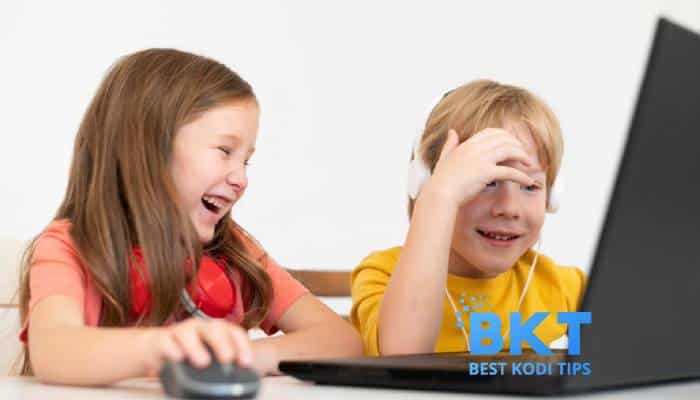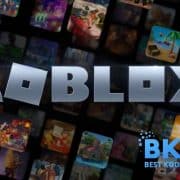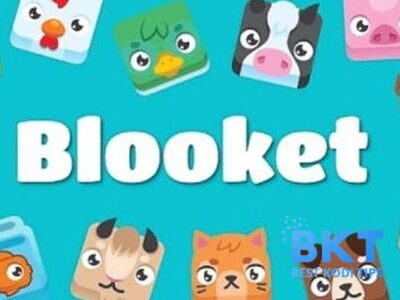Minecraft is a popular sandbox video game in which players may construct and explore virtual worlds built of blocks. It has a vast fan base across multiple platforms, including PC, consoles, and mobile devices. In Minecraft, users are dropped into a massive, created world where they can gather materials, craft tools, and goods, and construct constructions of any form using various types of blocks. Do you want to know if Minecraft is safe for kids? We’ll help you find out by discussing the positives and drawbacks of Minecraft in this blog.
What exactly is Minecraft?
The gameplay of Minecraft can be tailored to different playstyles. Players can engage in Survival mode, where they must gather resources, explore the world, and survive against hostile creatures and environmental challenges. Alternatively, they can choose Creative mode, which provides unlimited resources and allows for unrestricted building and exploration.
Minecraft also offers multiplayer options, enabling players to connect with others through local networks or online servers. They can collaborate on building projects, embark on adventures, compete in mini-games, or simply socialize within the game’s virtual community.
The game’s pixelated art style, simple mechanics, and open-ended gameplay have all contributed to its popularity, with players of all ages flocking to it. Minecraft’s popularity can be ascribed to its unique blend of creativity, exploration, survival, social connection, and educational components, which results in a varied and immersive game experience.
Why do Kids Love Minecraft?
There are several reasons why kids love Minecraft:
1. Creativity and Freedom: Minecraft offers an open-ended and creative environment where children can build and shape their own virtual worlds. They have the freedom to design structures, landscapes, and entire cities using different types of blocks. This creativity empowers kids and allows them to express themselves artistically.
2. Exploration and Adventure: Minecraft has a vast generated world that kids can explore. They can discover new biomes, caves, and structures, and encounter various creatures and monsters. The sense of adventure and the unknown appeals to children’s curiosity and encourages them to explore and discover new things.
3. Social Interaction: Minecraft provides multiplayer options that allow kids to play and collaborate with their friends or other players online. They can build together, embark on adventures, and showcase their creations. This social aspect of Minecraft enhances teamwork, communication, and cooperation skills.
4. Problem-Solving and Critical Thinking: Minecraft involves resource gathering, crafting, and survival elements. Kids need to strategize and think critically to build shelters, find food, and protect themselves from enemies.
5. Customization and Personalization: Minecraft offers a wide range of customizable options. Kids can personalize their gameplay experience to reflect their preferences and interests, whether it’s adding new features, changing the appearance of the game, or role-playing as their favourite characters.
6. Educational Value: Minecraft incorporates elements of science, architecture, mathematics, and even coding. Through gameplay, kids can learn about the properties of different materials, experiment with architectural designs, understand basic principles of logic, and engage in basic programming concepts using the game’s command blocks.
Overall, Minecraft’s combination of creative freedom, exploration, social interaction, problem-solving, customization, and educational aspects make it a highly engaging and appealing game for kids.
Benefits of Minecraft
Minecraft offers several benefits, including:
1. Spatial Awareness and Geometry: Minecraft’s block-based gameplay helps develop spatial awareness and an understanding of geometric concepts. Players learn about shapes, symmetry, scale, and proportions as they plan and build structures in the game world.
2. Collaboration and Social Skills: Multiplayer mode in Minecraft encourages collaboration and teamwork. Players can join forces to build projects, explore together, or engage in cooperative gameplay. This promotes communication, negotiation, and cooperation skills, as players work towards common goals and learn to interact with others effectively.
3. Planning and Organization: Minecraft requires planning and organization skills, especially when undertaking large construction projects. Players need to manage resources, create blueprints, and establish priorities to ensure their designs come to fruition. This helps develop skills related to time management, goal-setting, and project management.
4. Persistence and Resilience: Minecraft can be challenging, especially in survival mode. Players learn the value of persistence and resilience as they encounter setbacks, face difficult situations, and work towards overcoming adversity. It teaches them to persevere, learn from mistakes, and develop a growth mindset.
5. Environmental Awareness: Minecraft’s diverse biomes and ecosystems provide an opportunity for players to learn about the natural world. They can explore different environments, encounter animals and plants, and gain a basic understanding of ecosystems and environmental interactions.
It’s important to note that while Minecraft offers these benefits, moderation and balanced screen time are still essential for a well-rounded lifestyle.
Disadvantages of Minecraft for children
While Minecraft has numerous benefits, it also has a few drawbacks to consider:
1. Time Consumption: Minecraft can be highly engaging and immersive, leading to extended play sessions. Excessive screen time or prioritizing the game over other activities like schoolwork, physical exercise, or social interactions can negatively impact a child’s overall well-being and balance in life.
2. Sedentary Lifestyle: Minecraft is a sedentary activity that involves sitting for long periods. Lack of physical activity can contribute to health issues such as obesity, muscle weakness, and poor posture. It’s important to encourage breaks and balance Minecraft playtime with physical exercise and outdoor activities.
3. Online Interactions: Minecraft offers multiplayer features that allow players to interact with others online. While many interactions can be positive and collaborative, there is also a risk of encountering inappropriate language, behaviour, or individuals with malicious intent. It’s crucial to educate children about online safety, responsible behaviour, and the importance of reporting any concerning interactions.
4. Lack of Real-World Application: Although Minecraft offers educational potential, some argue that the skills acquired within the game may not always directly transfer to real-world contexts. While creativity, problem-solving, and teamwork are valuable skills, it’s important to ensure a balanced range of experiences that include practical, hands-on learning in various domains.
5. Potential for Addiction: Like any form of entertainment, Minecraft can become addictive for some individuals. Excessive gameplay, preoccupation with the game, withdrawal symptoms when not playing, and neglect of other aspects of life are signs that warrant attention. Monitoring and setting appropriate limits on playtime, along with encouraging a healthy balance of activities, are essential in preventing addiction.
It’s worth noting that the drawbacks mentioned above can be mitigated or minimized through responsible and mindful use of the game, setting appropriate boundaries, and maintaining open communication with children about their gaming habits.
Parental Controls
Parental control apps can play a crucial role in maintaining a safe and responsible use of Minecraft for children. Here are some ways parental controls can help:
1. Screen Time Management: Parental controls allow you to set time limits for Minecraft gameplay. You can establish specific periods during which the game is accessible or limit the total daily or weekly playtime. This helps prevent excessive screen time and ensures a balanced lifestyle for your child.
2. Age-Appropriate Content Filtering: Minecraft offers online multiplayer features, and parental controls can help filter and restrict the types of interactions your child has with other players. You can choose to limit communications to pre-approved friends or disable online interactions altogether, creating a safer online environment for your child.
3. Purchasing and In-App Transactions: Parental controls enable you to restrict or require authorization for in-game purchases and transactions. This helps prevent accidental or unauthorized purchases and ensures that your child does not overspend or engage in questionable transactions within the game.
4. Privacy and Online Safety: Parental controls allow you to manage your child’s privacy settings in Minecraft. You can control the visibility of their profile, limit the personal information they share, and apply appropriate privacy settings to protect them from potential online risks.
5. Monitoring and Reporting: Some parental control features provide monitoring capabilities, allowing you to track your child’s gameplay activity. You can view their playtime, interactions, and the content they access within the game. Additionally, you may have the ability to receive reports or notifications about their online behaviour or communications, helping you stay informed and address any concerns promptly.
6. Discussions and Communication: Parental controls should be complemented by open and ongoing discussions with your child about responsible gaming, online safety, and appropriate behaviour. Establishing guidelines, setting expectations, and maintaining open lines of communication can help reinforce the importance of responsible and safe use of Minecraft.
Remember, while parental controls are helpful tools, they are not foolproof. It’s essential to remain actively involved in your child’s gaming experience, regularly monitoring their activities, and engaging in conversations to ensure they understand the importance of responsible and safe gaming practices.
Conclusion
To summarise, Minecraft is a popular sandbox game that provides a variety of benefits for children. Its emphasis on creativity, exploration, problem-solving, and cooperation helps to develop imagination, critical thinking, social skills, and organizational ability. Minecraft can be used as a platform for educational expansions, promoting learning across a wide range of subjects. However, there are several negatives to consider, including excessive screen time, a sedentary lifestyle, online interactions, distraction, and the possibility of addiction. Parental controls can help keep Minecraft safe and responsible by controlling screen time, protecting privacy, and monitoring activities. Parents can ensure a happy and meaningful gaming experience for their children by combining the benefits of Minecraft with thoughtful oversight and balanced interaction.















Comments